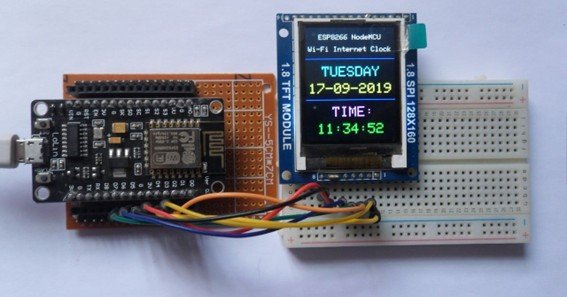Installing the 35-ds3chipdus3 chip can significantly enhance your system’s performance. This guide provides expert tips, essential tools, and best practices to ensure a smooth installation process.
Understanding the 35-ds3chipdus3
The 35-ds3chipdus3 is a high-performance microprocessor designed for a range of applications, from gaming rigs to smart home devices. Its modular architecture and energy-efficient design make it a popular choice among tech enthusiasts.
Pre-Installation Requirements
Before beginning the installation, ensure you have the following:
- Compatible Motherboard: Typically, an LGA 1700 socket is required.
- Cooling Solution: A stock air cooler or AIO liquid cooler.
- Thermal Paste: For effective heat transfer.
- Anti-Static Wrist Strap: To prevent electrostatic discharge.
- Screwdrivers and Toolkit: For assembling and disassembling components.
- Updated BIOS Firmware: Ensure your motherboard’s BIOS is up-to-date.
- Chipset Drivers: Download the latest drivers from the manufacturer’s website.
- Operating System Patches: Install the latest OS updates.
- Hardware Monitoring Tools: Software like HWMonitor or Core Temp.
Step-by-Step Installation Guide
- Safety First:
- Power down your system and unplug all peripherals.
- Discharge static electricity by grounding yourself or using an anti-static wrist strap.
- Open the Case:
- Remove the side panel and lay your system horizontally on a non-conductive surface.
- Remove the Old Processor (if upgrading):
- Unlock the retention arm on the CPU socket.
- Carefully remove the existing chip.
- Clean any residual thermal paste from the cooler and CPU socket.
- Install 35-ds3chipdus3:
- Align the golden triangle on the chip with the corresponding triangle on the socket.
- Gently place the chip into the socket without applying force.
- Secure the chip by locking the retention arm.
- Apply Thermal Paste:
- Place a pea-sized drop of thermal paste in the center of the chip.
- Install the Cooling System:
- Mount your cooler securely.
- Connect the fan cable to the motherboard’s CPU_FAN header.
- Reassemble and Power On:
- Replace the side panel.
- Reconnect the power supply and boot your system.
BIOS Configuration and Initial Boot
Upon powering up:
- Enter BIOS by pressing DEL or F2.
- Verify that the CPU is recognized correctly.
- Enable XMP profiles for RAM if available.
- Set fan curves and thermal thresholds to manage heat proactively.
- Save and exit BIOS.
Post-Installation Optimization
After installing the 35-ds3chipdus3:
- Install the latest chipset drivers.
- Use stress testing tools like Prime95 or Cinebench to test stability.
- Monitor temperatures to ensure the cooling system functions correctly.
- Update system utilities that support the chip’s advanced features.
Troubleshooting Common Issues
Issue: System Won’t Boot
- Recheck CPU seating and ensure all cables are reconnected.
- Update BIOS if the chip is not recognized.
- Ensure RAM modules are properly seated.
Issue: Overheating
- Reapply thermal paste.
- Ensure fans are spinning and airflow is adequate.
- Verify that the CPU cooler is compatible with the chip’s TDP.
Issue: Performance Seems Low
- Disable any power-saving BIOS settings.
- Ensure you’re not throttling via OS-level power plans.
- Check for background applications consuming CPU resources.
Best Practices
- Create a System Restore Point: Before making changes, create a restore point to revert if needed.
- Regularly Update Drivers: Keep your chipset and other drivers up-to-date for optimal performance.
- Monitor System Performance: Use monitoring tools to keep an eye on temperatures and system load.
- Backup Important Data: Always backup your data before making hardware changes.
FAQs
1. What is the 35-ds3chipdus3?
The 35-ds3chipdus3 is a high-performance microprocessor designed for various applications, including gaming and smart devices.
2. Is the 35-ds3chipdus3 compatible with all motherboards?
No, it typically requires a motherboard with an LGA 1700 socket. Always check your motherboard’s specifications before installation.
3. Do I need to update my BIOS before installing the 35-ds3chipdus3?
Yes, it’s recommended to have the latest BIOS firmware to ensure compatibility and optimal performance.
4. How do I know if the chip is installed correctly?
Upon booting, enter the BIOS to check if the CPU is recognized. Additionally, monitor system temperatures and performance to ensure stability.
5. What should I do if my system doesn’t boot after installation?
Recheck all connections, ensure the CPU is seated correctly, and verify that the BIOS is up-to-date. If issues persist, consult the motherboard’s manual or seek professional assistance.
Conclusion
Installing the 35-ds3chipdus3 can elevate your system’s capabilities. By following this guide, you ensure a smooth installation and optimal performance.










